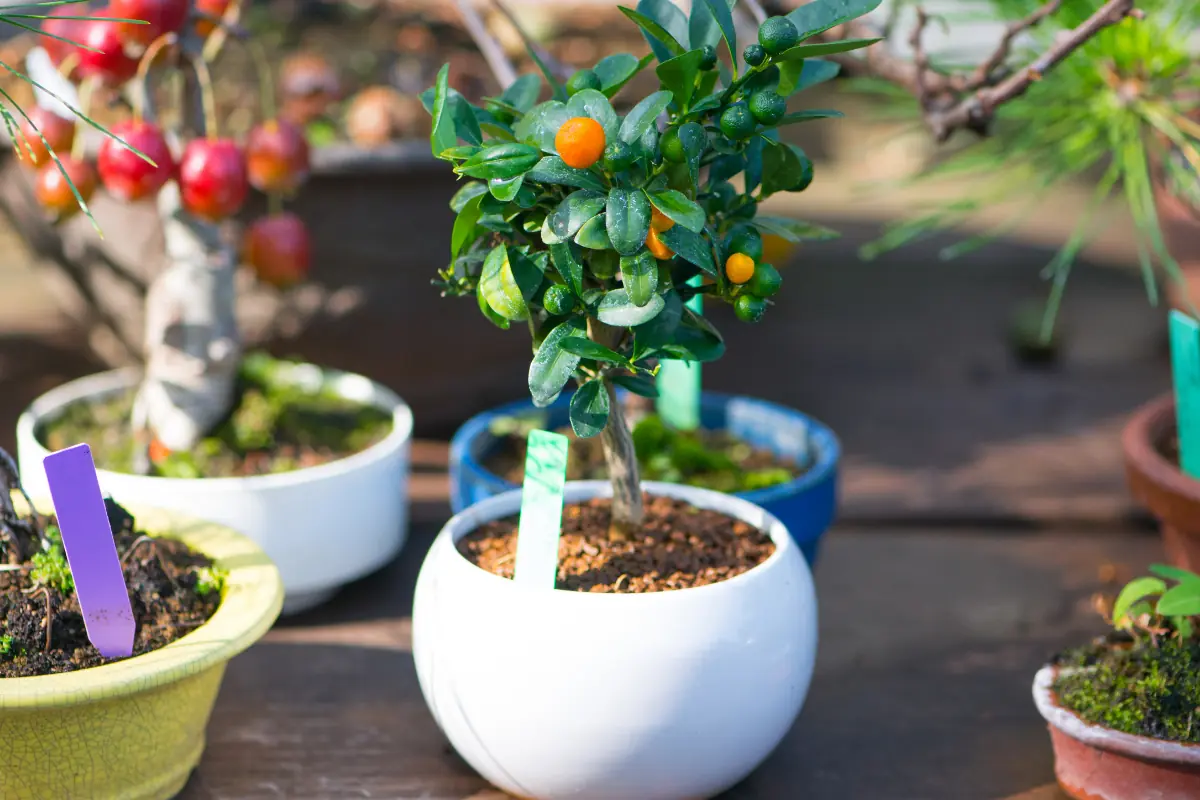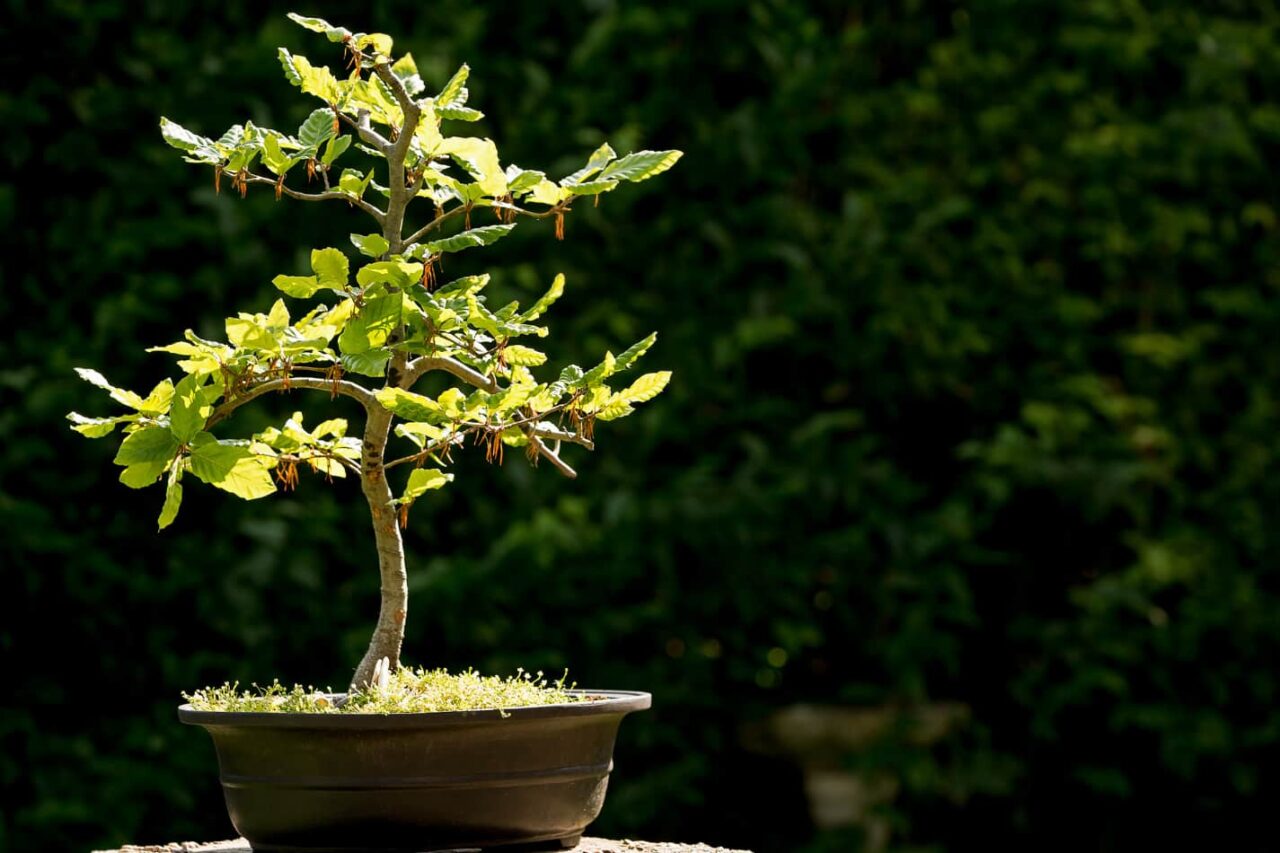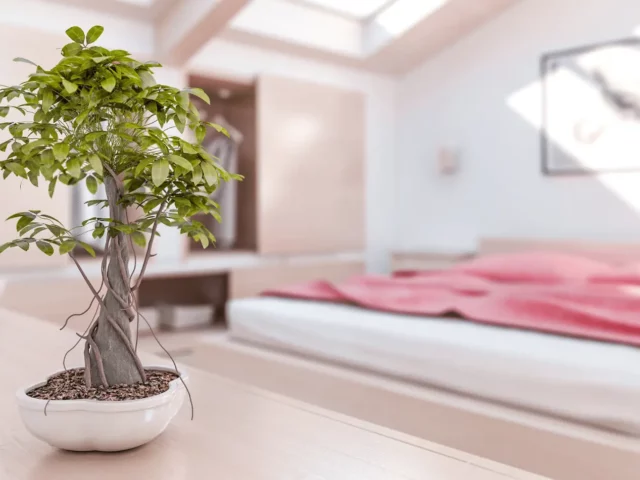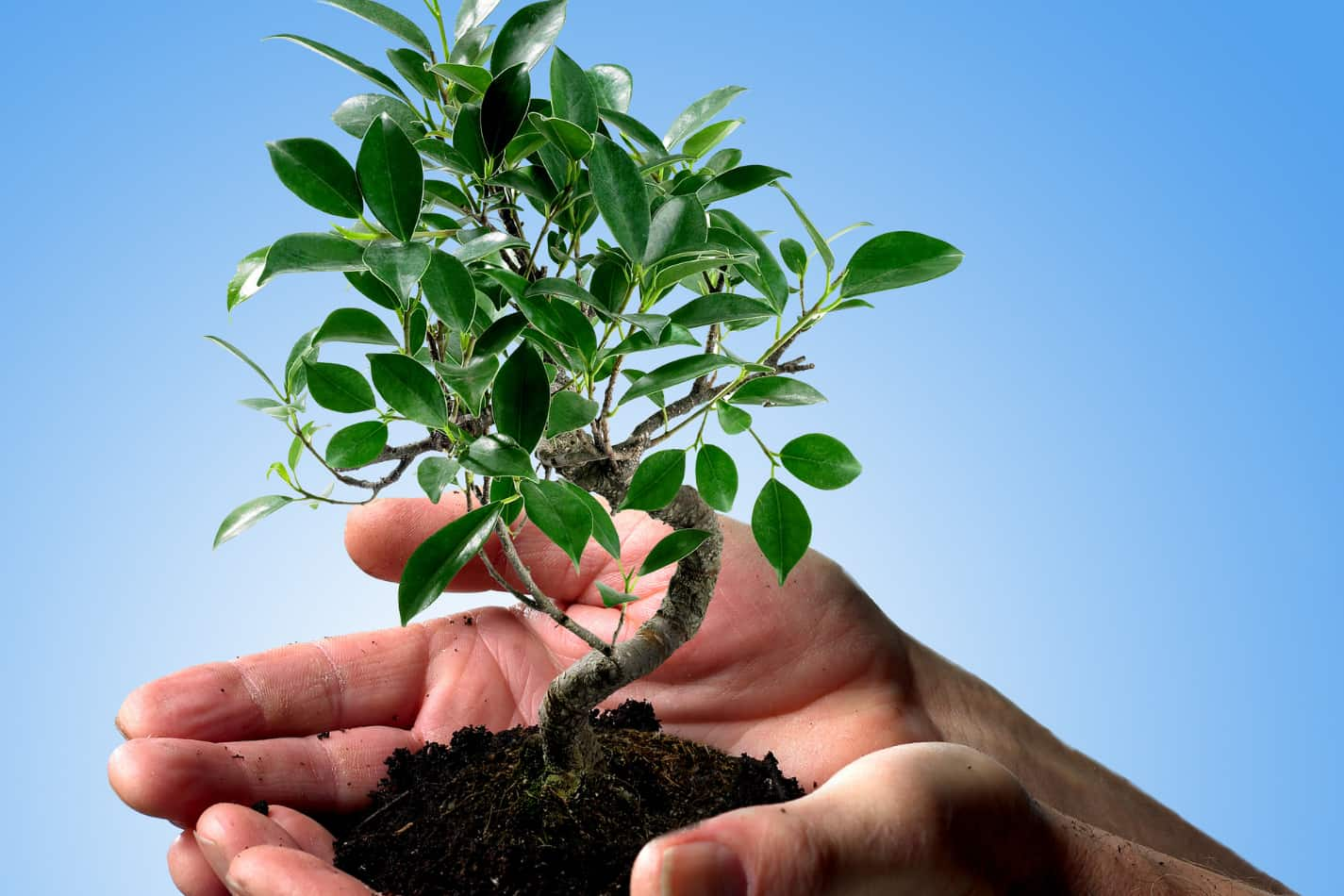Beneath the breathtaking beauty of bonsai, you’ve probably pondered if these pint-sized plants are products of genetic modification.
While the allure of ancient artistry aligns with traditional techniques rather than modern meddling, the question merits a closer look.
You see, bonsai cultivation involves meticulous pruning, careful wiring, and patient shaping, not splicing genes or altering DNA.
However, as advances in plant science continue to blur the boundaries between natural and modified, it’s worth considering where bonsai fits into this evolving narrative.
So, let’s explore the intersection of tradition and technology to uncover if bonsai truly remains a testament to nature’s untouched elegance.

Key Takeaways
- Traditional bonsai cultivation avoids genetic modification, focusing on natural shaping techniques.
- Genetic modification in bonsai involves altering genes for unique traits, diverging from traditional methods.
- While genetic engineering offers benefits like enhanced features, it raises ecological and ethical concerns.
- Bonsai is traditionally celebrated as a natural art form, not reliant on genetic manipulation for its beauty.
Understanding Bonsai Tradition
To truly appreciate bonsai, it’s crucial to understand that this art form relies on meticulous shaping techniques, such as pruning and wiring, rather than genetic modification, to cultivate miniature trees that embody natural beauty and harmony.
The art of bonsai, steeped in tradition, demands not just patience and skill but a profound respect for the natural world. By selecting specific tree species, enthusiasts embark on a journey of transformation, turning raw, unshaped materials into breathtaking landscapes in miniature.
This process, far from being a quick fix, involves a detailed understanding of each tree’s growth patterns, ensuring that every cut or twist serves to highlight its unique beauty and balance.
In essence, bonsai celebrates the freedom to create, while adhering to the principles that honor the essence of nature.

Genetic Modification Explained
You’re entering the realm of genetic modification, a process that fundamentally alters the genetic makeup of organisms, including bonsai trees, through sophisticated biotechnology techniques.
This method enables the insertion of genes from different species into bonsai, conferring them with unique traits such as enhanced disease resistance or altered growth patterns.
Understanding the techniques involved in modification is crucial, as it sheds light on how new varieties of bonsai are developed rapidly, alongside the associated ecological and ethical concerns.
Defining Genetic Modification
Genetic modification entails the deliberate alteration of an organism’s genetic makeup to introduce desired traits or characteristics not naturally present. This process allows you to manipulate the very blueprint of life, offering the freedom to engineer organisms, including bonsai, with enhanced qualities.
Through precise genetic intervention, it’s possible to imbue these living sculptures with attributes surpassing their conventional limitations.
Genetic modification represents a frontier of possibility, whether it’s bolstering resilience against pests, modifying growth patterns for aesthetic appeal, or fortifying against harsh environmental conditions.
Techniques in Modification
Several advanced techniques, such as gene splicing, gene editing, and gene insertion, are employed to meticulously modify the genetic material of bonsai trees, aiming to enhance their characteristics and resilience.
Through genetic modification, scientists can rapidly create new bonsai cultivars with improved traits like drought resistance, pest resilience, and superior aesthetics, bypassing the conventional years to grow.
This scientific process allows for the precise manipulation of genes to achieve specific, desired outcomes. However, it’s vital to consider the implications of such modifications, including potential impacts on ecosystems and the ethical aspects of altering natural species.
As you explore the freedom genetic modification offers, remember the balance between innovation and the preservation of natural integrity.
Bonsai Cultivation Techniques
You’ll find that pruning strategies and soil composition choices are pivotal to the art of bonsai cultivation.
By carefully selecting and manipulating these elements, you can influence both the aesthetic and physiological development of the plant.
This approach requires a deep understanding of the species you’re working with and a precise application of techniques to achieve the desired miniature landscape.
Pruning Strategies
Pruning strategies, often meticulously applied, are essential in bonsai cultivation, allowing you to precisely shape and maintain the desired size and appearance of your tree.
By carefully trimming branches and roots, you engage in a practice that not only regulates growth but also promotes a healthy development trajectory for your bonsai trees.
Techniques such as directional pruning guide the tree’s growth in specific directions, while clip and grow methods, alongside maintenance pruning, facilitate the gradual shaping of your bonsai.
Regular pruning is pivotal, encouraging back budding, which results in denser foliage and finer branching. This fundamental practice in bonsai care enables you, the enthusiast, to sculpt and refine your miniature trees meticulously, ensuring their aesthetic appeal and vitality.
Soil Composition Choices
Choosing the right soil composition is fundamental to the success of your bonsai’s growth and overall health, with specific mixes like akadama, pumice, and lava rock standing out for their beneficial properties.
Akadama soil, a great choice for your bonsai tree, ensures optimal aeration and moisture retention, crucial for healthy root development.
Pumice, being lightweight, prevents soil compaction, allowing roots to breathe freely, which is vital for the vigor of your bonsai tree.
Lava rock not only aids in drainage, ensuring the roots aren’t waterlogged, but also adds stability to the soil mix.
This combination supports the overall root health of your bonsai tree, making it a superior choice for enthusiasts seeking the freedom to cultivate thriving bonsai with precision and care.

Common Misconceptions
Despite common beliefs, bonsai trees aren’t genetically modified but are meticulously shaped through traditional pruning and wiring techniques. This art form requires patience, skill, and an understanding of the tree’s natural growth patterns.
Taking care of bonsai isn’t about altering their genetic makeup but about guiding their growth to reflect the beauty and harmony of nature. The process emphasizes the importance of dedication and a deep connection with the plant, allowing the cultivator to shape a miniature yet perfectly natural-looking tree.
Bonsai cultivation relies on centuries-old methods that celebrate the art of patience and the skill of hand, rather than the science of genetic modification. This approach ensures that each bonsai tree remains a unique expression of both the cultivator’s vision and nature’s inherent beauty.
Advances in Plant Science
While bonsai trees have traditionally been shaped by hand through centuries-old methods, recent advances in plant science now offer the potential to enhance specific traits through genetic engineering.
This deliberate manipulation of genes in miniature trees enables the rapid creation of new cultivars and varieties, expanding the artistic and horticultural boundaries of bonsai.
Techniques in genetic engineering can introduce traits such as drought resistance and weed control, making these miniature trees more resilient and easier to maintain.
Moreover, genetic modifications allow for the combination of genes to create bonsai trees with desired characteristics, including unique appearances and improved adaptability to indoor environments.
Plant scientists are actively using genetic engineering to push the limits of what can be achieved with bonsai, offering enthusiasts the freedom to explore an ever-expanding array of indoor bonsai tree varieties with distinctive features.
Bonsai: Natural or Modified?
The art of bonsai, deeply rooted in tradition, primarily involves the natural shaping of miniature trees without the intervention of genetic modification.
You’re engaging with a practice that emphasizes the beauty of nature through traditional methods like pruning and wiring, rather than altering the genetic makeup of the plants.
This approach allows for the artistic manipulation of trees to achieve their miniature form, showcasing their natural growth patterns in a way that’s both aesthetically pleasing and respectful to their essence.
Bonsai cultivation steers clear of genetic modification, relying instead on centuries-old techniques to nurture and shape these living artworks. By appreciating bonsai, you’re celebrating a form of art that honors the natural world, embodying freedom in the careful, considered guidance of a tree’s growth.
Conclusion
In conclusion, bonsai trees aren’t genetically modified; they’re shaped through traditional techniques like pruning and wiring, which don’t alter their genetic makeup.
This art form, deeply rooted in Chinese and Japanese cultures, leverages natural tree varieties, skillfully manipulating their growth without the need for genetic intervention.
Advances in plant science offer new insights, yet the essence of bonsai cultivation remains a testament to human patience, skill, and a profound appreciation for nature’s aesthetics, not genetic modification.






